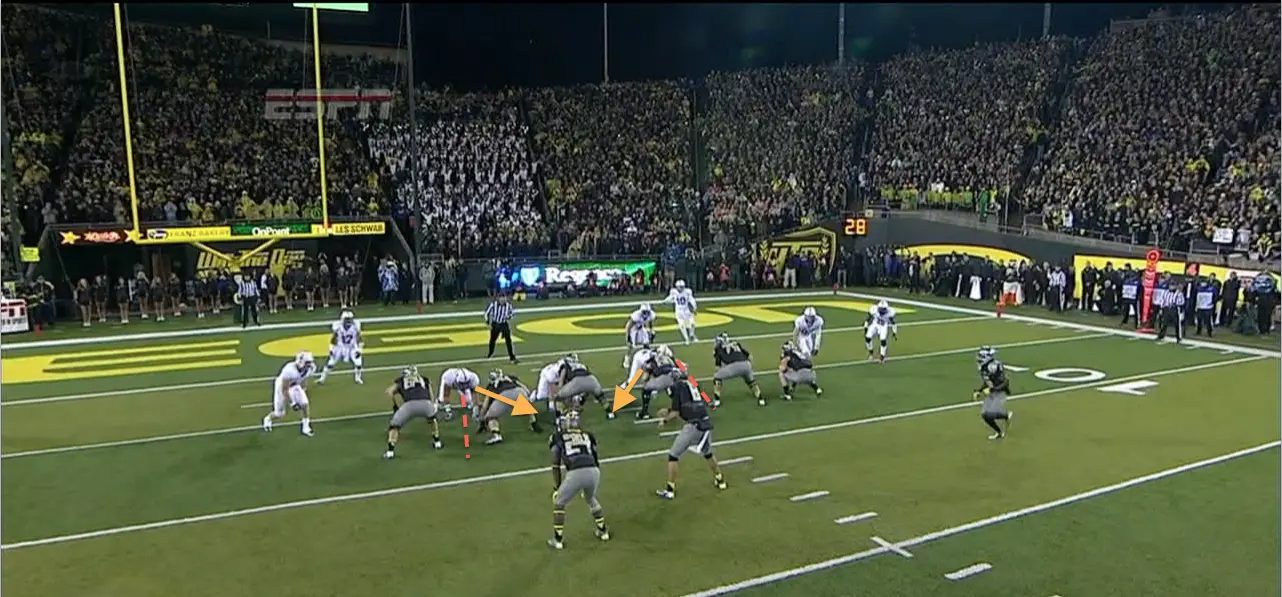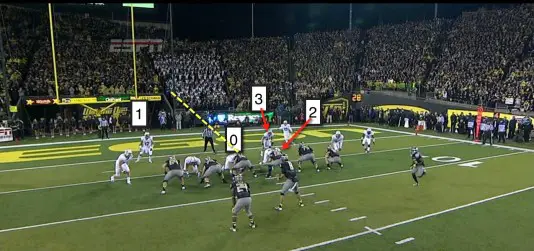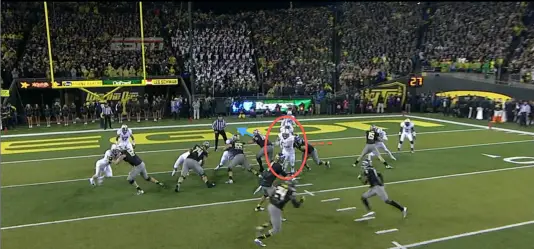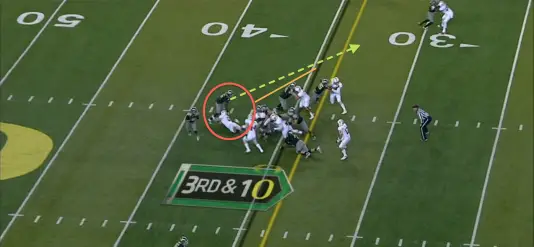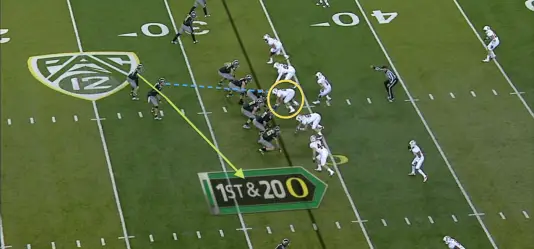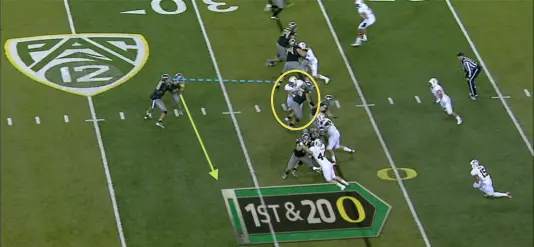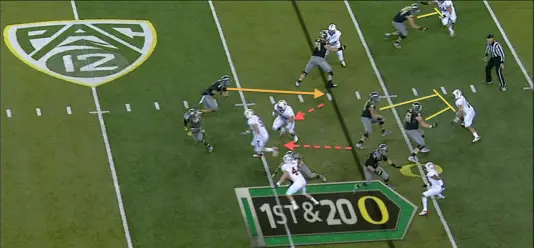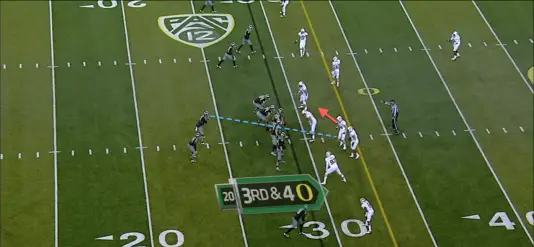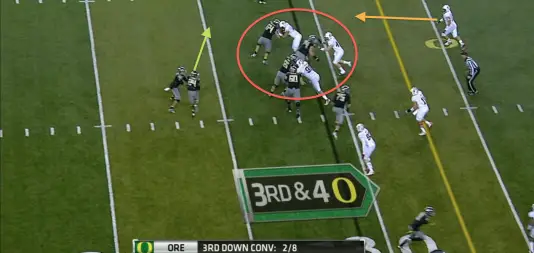For a moment, the “Oregon Paradigm” got to me. I didn’t expect Stanford to slow Oregon down, much less hold them to 14 points in a dominant fashion. When Oregon plays elite defenses, the results will never result in 40 point victories. No offense will be breaking big plays consistently against high caliber defenses. When Oregon plays good teams, the score should reflect that of two good teams playing each other- low scoring battles with the more effective and efficient team coming out on top. Last Saturday, Stanford provided the Ducks one of those games, and just as expected, the better team on that given night won.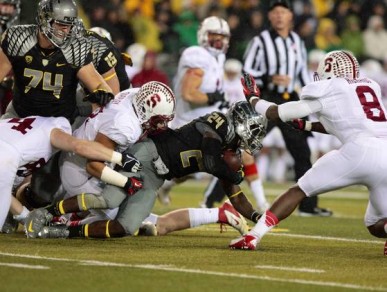
Stanford’s efforts should be considered extraordinary- it was the first time that Chip Kelly’s offense was obliterated at the point of attack in a long time, potentially ever. The Cardinal’s ability to separate from blocks, make great tackles, and anticipate the Ducks’ tendencies was a landmark performance. On top of their physical efforts, the Stanford defensive game plan allowed the Cardinal to do unprecedented damage to Oregon’s offense.
Stanford’s game plan didn’t resemble the gimmicky Cover-0 approach Cal used in 2010 at all, it was an old-fashioned defensive scheme that can confuse nearly every offensive blocking scheme in the game. The particular alignment Stanford used was the “Bear” front, which we will discuss in more detail shortly.
After Mariota’s long run in the first quarter, Stanford held strong on fourth down to turn the Ducks away deep in Cardinal territory. Stanford showed the unique alignment that repeatedly beat the Oregon offensive line throughout the game on this drive.
Above, Stanford’s defensive linemen are aligned in a “Bear” front meaning that the defensive ends are lined up in the tackle-guard gap, or “B-Gap.” The Cardinal D-Line complicate matters by pinching down on the offensive line, which will set up some problems for Oregon’s blocking scheme.
To block the inside zone play, each lineman takes the nearest unblocked playside defender, or the first unblocked defender to their left. I’ve annotated the screenshot above to show the blocking scheme of the Oregon offensive line. The center, Grasu, has a man over him, so the nose guard is the “point” defender (0 defender), whom Grasu blocks handily. The right guard blocks the next unblocked man to his left, and in this alignment, the guard has to block the playside linebacker (1 defender). The right tackle then blocks the defensive tackle (2 defender), which is usually not a hard block for the tackle to make, but when the defensive ends are crashing, it is nearly an impossible block for Fisher. Mariota will be reading the backside linebacker (3 defender).
As expected, the Stanford defensive end (right circle, above) beats the right tackle as the right guard leaks up to the second level. Mariota’s read is immediately compromised, and must change to the now unblocked defensive lineman in the backfield.
Stanford’s defensive end pummels De’Anthony as Mariota pulls the ball, but Marcus is left with three defenders coming in for the tackle (red arrows, above), and no where to pitch the ball. This innovative alignment disrupted zone schemes in the first half, so Kelly and Helfrich moved to the man-on-man blocking scheme in the power play.
Oregon’s power play has the right guard (orange line, above) pulling behind the center to bring an additional blocker to the hole. Stanford comes back with the same look here, and pinches the defensive ends down (red arrow), allowing the defensive end to jump through the hole vacated by the pulling guard.
The right tackle (bottom of the red circle, above) has a difficult cut block again. Although the tackle doesn’t have an impossible block, Stanford’s defensive linemen are extremely talented, and will beat this block nine times out of ten.
As Thomas is stopped in the backfield by the free defensive end, the rest of the play is perfectly lined up for a big gain. If the defensive end doesn’t crash down to the center, De’Anthony likely scores on this play (blocks illustrated by the orange line above).
Chip Kelly’s staff makes some of the best adjustments in College Football, and this game was no exception. To combat the crashing defensive ends, Oregon started to call midlevel (midline) plays, that read the interior defenders, rather than blocking them.
On this midlevel play above, Stanford lines up in its new Bear front, but this time Oregon will be reading the nose tackle (yellow circle).
The Stanford nose guard chases down the running back, and Mariota pulls the ball and heads upfield.
Mariota has plenty of room to run, and has blocks set up for a good gain. Typically, Oregon’s adjustments puzzle defensive coordinators so much that they start to turtle back into base coverages, and the Ducks start slashing through those defenses. Stanford’s defense didn’t back down, and adjusted right back.
One of Oregon’s schematic advantages comes from adding a blocker to the playside through reading the backside defender. Stanford realized that Oregon was reading the interior defenders, so they simply took the interior defender away from the backside of the defensive line.
In the picture above, you’ll see the Cardinal lining up in a typical three man front, but as the linebacker Thomas approaches the line of scrimmage, he sees the running back “aimed” to the left, and switches the defensive play.
The linebacker creeps over to his right, removing Oregon’s leverage advantage. Mariota is left to read the backside defensive end, whose only responsibility is to tackle the quarterback.
As the play progresses, Stanford’s three defenders tangle up Oregon’s three blockers (red circle, above), leaving the Cardinal linebackers free to tackle Barner yet again. This particular alignment cost Stanford some yards several times, but in the long run, this alignment took Oregon’s outside zone and sweep reads out of commission, simplifying the offense to just inside runs and drop-back passes. Against Stanford’s elite defense, two concepts won’t cut it.
This ending of the two-part series of how Stanford stopped the Oregon Defense, is a FishDuck.com first of collaboration by Charles and myself, and some serious analysis of this game not seen at any other media source. We will not just study the “happy” content of new plays in the future, but what we as fans want and need to learn…even when we lose. (Especially when we lose!) This off-season bodes a tremendous learning experience for us all!
“Oh how we love to learn about our beloved Ducks!”
Josh Schlichter
Oregon Football Analyst for FishDuck.com
Eugene, Oregon
Top Photo from Video
Josh is a College Football enthusiast from sunny Southern California. He has written for several self-operated prep sports blogs, as well as multiple SB Nation sites. In High School, Josh played football for four years, and helped create and operate the team’s no-huddle system. Most of Josh’s football knowledge branches from watching College Football his entire life, and is backed up by his first hand experience in both option and spread offenses. Above all, though, he is a proud student at the University of Oregon.
@joshschlichter

